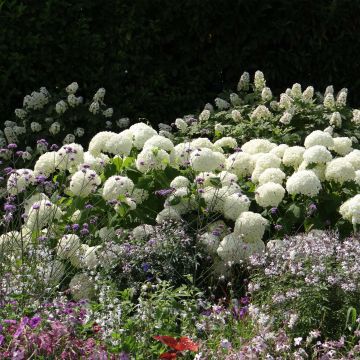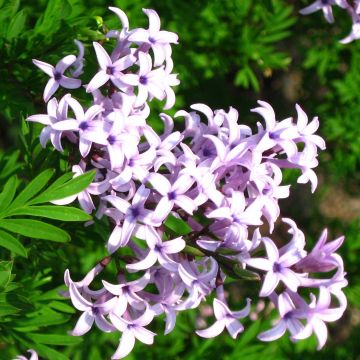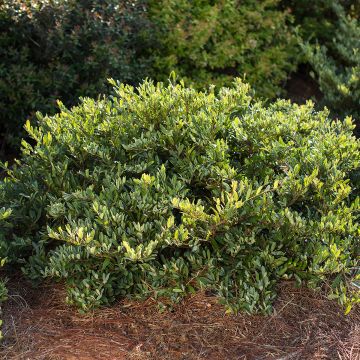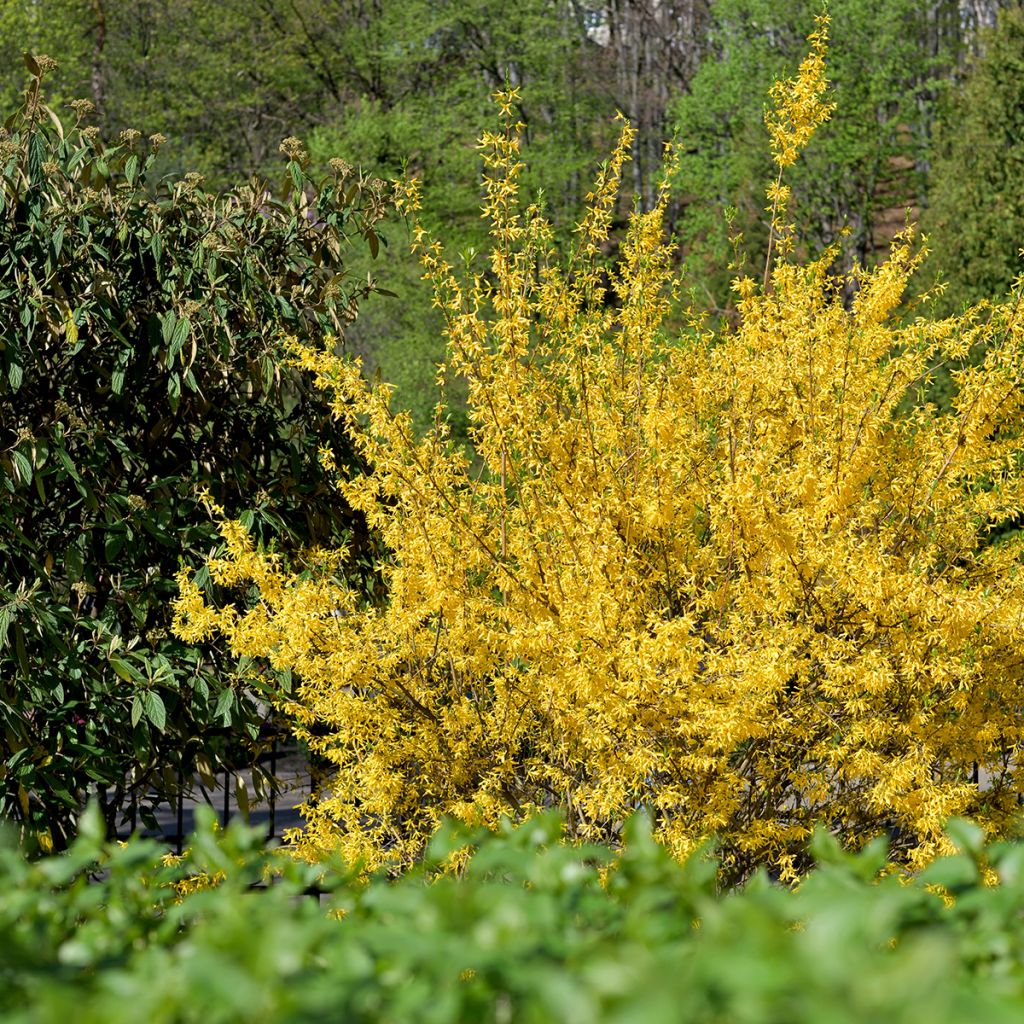

Forsythia intermedia Goldzauber
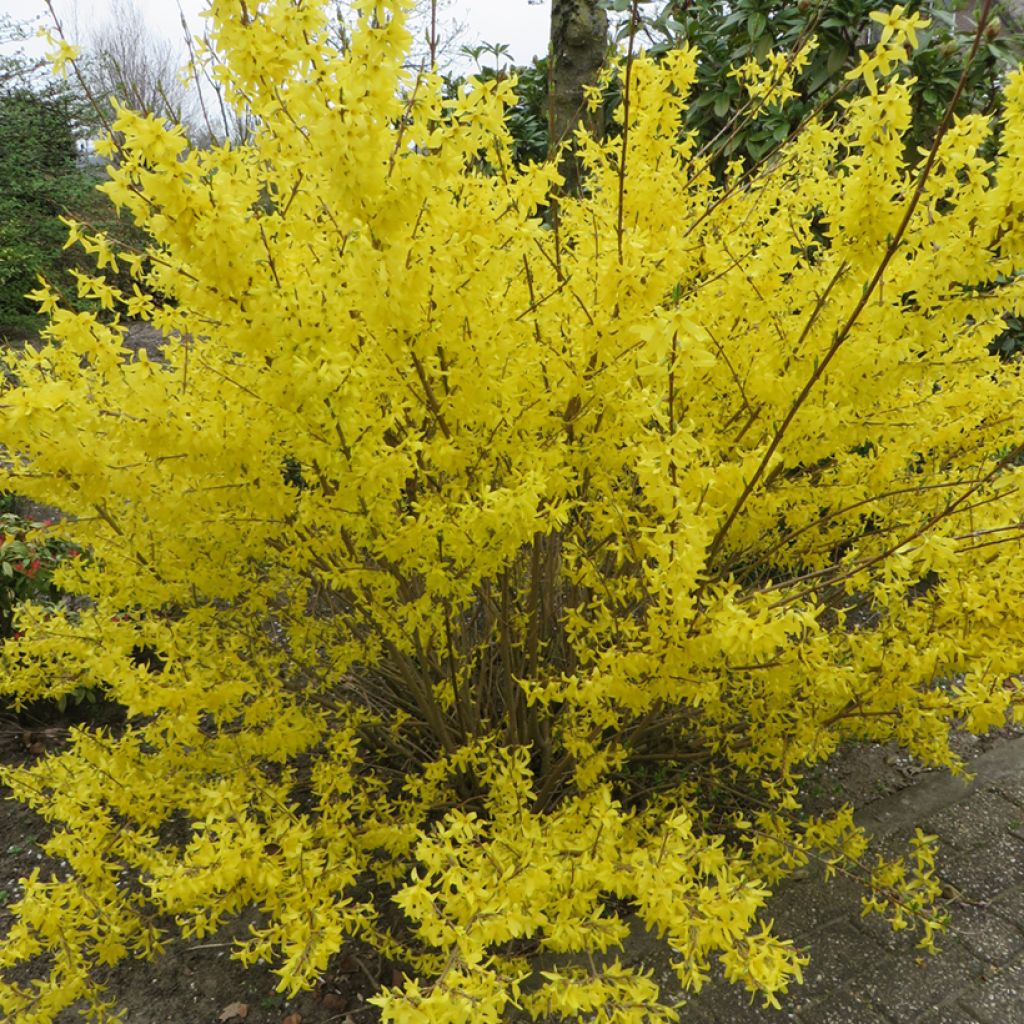

Forsythia intermedia Goldzauber
Forsythia intermedia Goldzauber
Forsythia x intermedia Goldzauber
Border Forsythia, Golden Bells
Special offer!
Receive a €20 voucher for any order over €90 (excluding delivery costs, credit notes, and plastic-free options)!
1- Add your favorite plants to your cart.
2- Once you have reached €90, confirm your order (you can even choose the delivery date!).
3- As soon as your order is shipped, you will receive an email containing your voucher code, valid for 3 months (90 days).
Your voucher is unique and can only be used once, for any order with a minimum value of €20, excluding delivery costs.
Can be combined with other current offers, non-divisible and non-refundable.
Home or relay delivery (depending on size and destination)
Schedule delivery date,
and select date in basket
This plant carries a 24 months recovery warranty
More information
We guarantee the quality of our plants for a full growing cycle, and will replace at our expense any plant that fails to recover under normal climatic and planting conditions.
Would this plant suit my garden?
Set up your Plantfit profile →
Description
The Forsythia x intermedia 'Goldzauber' is one of the varieties of Mimosa de Paris that produces the largest flowers. Fast-growing, this German selection remains relatively compact, forming a bushy shrub as wide as it is tall. It is in early spring that the magic happens when it is covered in its floral adornment of an exceptionally bright golden yellow that lights up the garden. Extremely hardy, adapting to most soils and well-suited to urban environments, it is a perfect plant for hedges or borders and can even be grown in containers.
The Forsythia is a deciduous shrub of the Oleaceae family, which includes 25 genera, many of which are used ornamentally, such as Jasmines (Jasminum) with their enchanting fragrances, as well as Lilacs (Syringa), and even the Olive tree, a noble plant par excellence. The Forsythia genus includes about ten species, the most widespread of which, through numerous cultivars, is Forsythia x intermedia. As indicated by the x, it is a hybrid between two botanical species, F. suspensa, with long flexible branches and native to eastern China, and F. viridissima, which, on the contrary, has an upright habit and comes from China and Korea. The first hybrid of the group was found in 1878 at the Göttingen Botanical Garden in Germany. 'Goldzauber', as its name suggests ("golden magic" or "golden enchantment"), is a German cultivar resulting from the cross-breeding of the 'Beatrix Farrand' and 'Lynwood' varieties, both reliable choices. It remains one of the most popular varieties introduced to the market as early as 1974. Fast-growing (30 to 60 cm per year), this Forsythia will reach its adult size of approximately 2 m in height or even a little more and 2 m in width in three to four years. It has an upright and wide habit, is very dense, and is well-suited for creating magnificent hedges.
The young shoots are linear in the first year and branch out the following year. The brown branches, adorned with small whitish lenticels, are thin but flexible and,therefore, resistant to wind. The flowers appear early in spring, from March to April, before the leaves, making the shrub easily identifiable by all. 'Goldzauber' has huge flowers, measuring up to 4 cm in diameter, making the flowering even more dazzling than in other varieties. They are a bright golden yellow, covering the entire shrub in an explosion of colour. Generally solitary, they are attached to the branches by a short floral peduncle a few millimetres long. The old wood is less floriferous, so pruning is necessary for this shrub to maintain its youthful character. The flowering lasts about three weeks and marks the arrival of spring, bringing joy to the garden. Another advantage of this variety is that its flowers are less sensitive to spring frosts than other cultivars. The leaves appear a little before the end of the flowering period, tender green when they emerge, and darken slightly afterwards. Elliptical in shape, with a pointed tip, they are of medium size (5 to 10 cm), relatively narrow and toothed along their edges. They are said to be opposite-decussate, as they are placed face to face on the branch, with each pair of leaves being offset by 90° from the previous pair. The foliage can take on attractive autumnal colours. Depending on the climate and soil
The Forsythia 'Goldzauber' is the epitome of an easy-to-grow plant. It is unmatched in bringing joy to a border and can also be used to create magnificent hedges. However, do not succumb to the habit of a monospecific hedge, as by combining different species, you will achieve a much more intense decorative effect, especially by spreading out the flowering periods. A free-form hedge, refined with secateurs, will be much more aesthetic than a wall of vegetation trimmed with a hedge trimmer. For example, the Berberis darwinii, with its dark green evergreen foliage, will take over from your Forsythia with its beautiful orange flowering in April-May. On the other hand, the Deutzia crenata 'Pride of Rochester ' will provide you with superb double white flowering from May to June. And for the summer, the Hibiscus syriacus 'Azurii' is a must-have with its large single blue flowers and red centre reminiscent of tropical Hibiscus.
In winter, consider forcing: cutting a few branches of your Forsythia and placing them in a vase inside the house; they will bloom ahead of time!
Report an error about the product description
Plant habit
Flowering
Foliage
Botanical data
Forsythia
x intermedia
Goldzauber
Oleaceae
Border Forsythia, Golden Bells
Cultivar or hybrid
Planting and care
The Forsythia x intermedia 'Goldzauber' appreciates sunny exposure to flower well but tolerates partial shade in very sunny regions. Place it in any ordinary soil, even clay or limestone, deep enough and loosened, enriched with compost at planting. After flowering, optionally remove half or two-thirds of the height of the flowering branches to rejuvenate the bush and ensure a quality flowering in the following spring. For the first three years, a simple cleaning of dead, thin or misplaced stems will suffice, giving the plant time to reach its adult size.
Planting period
Intended location
Care
This item has not been reviewed yet - be the first to leave a review about it.
Similar products
Haven't found what you were looking for?
Hardiness is the lowest winter temperature a plant can endure without suffering serious damage or even dying. However, hardiness is affected by location (a sheltered area, such as a patio), protection (winter cover) and soil type (hardiness is improved by well-drained soil).

Photo Sharing Terms & Conditions
In order to encourage gardeners to interact and share their experiences, Promesse de fleurs offers various media enabling content to be uploaded onto its Site - in particular via the ‘Photo sharing’ module.
The User agrees to refrain from:
- Posting any content that is illegal, prejudicial, insulting, racist, inciteful to hatred, revisionist, contrary to public decency, that infringes on privacy or on the privacy rights of third parties, in particular the publicity rights of persons and goods, intellectual property rights, or the right to privacy.
- Submitting content on behalf of a third party;
- Impersonate the identity of a third party and/or publish any personal information about a third party;
In general, the User undertakes to refrain from any unethical behaviour.
All Content (in particular text, comments, files, images, photos, videos, creative works, etc.), which may be subject to property or intellectual property rights, image or other private rights, shall remain the property of the User, subject to the limited rights granted by the terms of the licence granted by Promesse de fleurs as stated below. Users are at liberty to publish or not to publish such Content on the Site, notably via the ‘Photo Sharing’ facility, and accept that this Content shall be made public and freely accessible, notably on the Internet.
Users further acknowledge, undertake to have ,and guarantee that they hold all necessary rights and permissions to publish such material on the Site, in particular with regard to the legislation in force pertaining to any privacy, property, intellectual property, image, or contractual rights, or rights of any other nature. By publishing such Content on the Site, Users acknowledge accepting full liability as publishers of the Content within the meaning of the law, and grant Promesse de fleurs, free of charge, an inclusive, worldwide licence for the said Content for the entire duration of its publication, including all reproduction, representation, up/downloading, displaying, performing, transmission, and storage rights.
Users also grant permission for their name to be linked to the Content and accept that this link may not always be made available.
By engaging in posting material, Users consent to their Content becoming automatically accessible on the Internet, in particular on other sites and/or blogs and/or web pages of the Promesse de fleurs site, including in particular social pages and the Promesse de fleurs catalogue.
Users may secure the removal of entrusted content free of charge by issuing a simple request via our contact form.
The flowering period indicated on our website applies to countries and regions located in USDA zone 8 (France, the United Kingdom, Ireland, the Netherlands, etc.)
It will vary according to where you live:
- In zones 9 to 10 (Italy, Spain, Greece, etc.), flowering will occur about 2 to 4 weeks earlier.
- In zones 6 to 7 (Germany, Poland, Slovenia, and lower mountainous regions), flowering will be delayed by 2 to 3 weeks.
- In zone 5 (Central Europe, Scandinavia), blooming will be delayed by 3 to 5 weeks.
In temperate climates, pruning of spring-flowering shrubs (forsythia, spireas, etc.) should be done just after flowering.
Pruning of summer-flowering shrubs (Indian Lilac, Perovskia, etc.) can be done in winter or spring.
In cold regions as well as with frost-sensitive plants, avoid pruning too early when severe frosts may still occur.
The planting period indicated on our website applies to countries and regions located in USDA zone 8 (France, United Kingdom, Ireland, Netherlands).
It will vary according to where you live:
- In Mediterranean zones (Marseille, Madrid, Milan, etc.), autumn and winter are the best planting periods.
- In continental zones (Strasbourg, Munich, Vienna, etc.), delay planting by 2 to 3 weeks in spring and bring it forward by 2 to 4 weeks in autumn.
- In mountainous regions (the Alps, Pyrenees, Carpathians, etc.), it is best to plant in late spring (May-June) or late summer (August-September).
The harvesting period indicated on our website applies to countries and regions in USDA zone 8 (France, England, Ireland, the Netherlands).
In colder areas (Scandinavia, Poland, Austria...) fruit and vegetable harvests are likely to be delayed by 3-4 weeks.
In warmer areas (Italy, Spain, Greece, etc.), harvesting will probably take place earlier, depending on weather conditions.
The sowing periods indicated on our website apply to countries and regions within USDA Zone 8 (France, UK, Ireland, Netherlands).
In colder areas (Scandinavia, Poland, Austria...), delay any outdoor sowing by 3-4 weeks, or sow under glass.
In warmer climes (Italy, Spain, Greece, etc.), bring outdoor sowing forward by a few weeks.

































